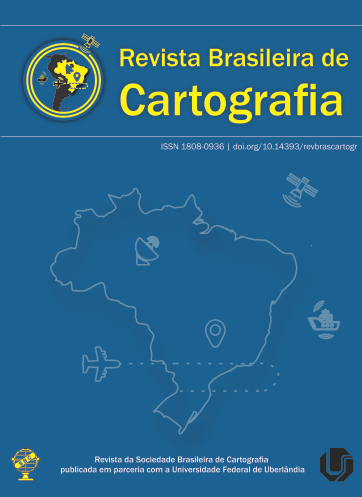Comparação entre diferentes métodos de interpolação zonal para estimativa populacional: estudo de caso das áreas urbanas do Distrito Federal
Conteúdo do artigo principal
Resumo
Os dados acerca das características da população, normalmente divulgados pelo censo, são de suma importância, pois subsidiam inúmeros estudos sociais, econômicos e ambientais. Estes dados são agregados de maneira arbitrária, considerando a informação homogênea em um determinado espaço. Uma alternativa para contornar esse problema e gerar informação com qualidade espacial mais precisa é a utilização do mapeamento dasimétrico. O mapa dasimétrico utiliza dados auxiliares para refinar a representação da distribuição espacial da variável analisada. No decorrer das últimas décadas essa se tornou uma técnica bastante utilizada e diversos trabalhos foram realizados com diferentes abordagens metodológicas. Dessa forma, este trabalho tem como objetivo avaliar o desempenho de três diferentes abordagens do mapeamento dasimétrico para a estimativa da população urbana do Distrito Federal. Para tanto, utilizou-se os modelos dasimétricos por ponderação de área (MD1), utilizando densidade relativa subjetiva (MD2) e o método dasimétrico inteligente (MDI) com a densidade relativa amostrada pelo método do centroide (MD3). Para a geração dos mapas foram utilizados dados do censo com o valor populacional em nível de subdistrito. O mapa de uso e cobertura utilizado possui resolução de 1m e foi modificado a partir do mapeamento de tipos de estruturas urbanas (UST) do DF, o qual classifica a área urbana em relação a sua homogeneidade considerando aspectos de funcionalidade, material de cobertura e características físicas. Para a avaliação dos métodos gerados utilizou-se métodos estatísticos e gráficos, utilizando como comparação a informação da população em nível de setores censitários. De acordo com as análises aplicadas o modelo que demonstrou o melhor desempenho foi o MD3, sendo esta técnica aplicada para o nível de informação de setores censitários como mapa final de estimativa da distribuição espacial da população urbana do DF.
Downloads
Detalhes do artigo
Seção
Autores que publicam nesta revista concordam com os seguintes termos:
- Autores mantém os direitos autorais e concedem à revista o direito de primeira publicação, com o trabalho simultaneamente licenciado sob a Licença Creative Commons Atribuição que permite o compartilhamento do trabalho com reconhecimento da autoria e publicação inicial nesta revista.
- Autores têm autorização para assumir contratos adicionais separadamente, para distribuição não-exclusiva da versão do trabalho publicada nesta revista (ex.: publicar em repositório institucional ou como capítulo de livro), com reconhecimento de autoria e publicação inicial nesta revista.
- Autores têm permissão e são estimulados a publicar e distribuir seu trabalho online (ex.: em repositórios institucionais ou na sua página pessoal) a qualquer ponto antes ou durante o processo editorial, já que isso pode gerar alterações produtivas, bem como aumentar o impacto e a citação do trabalho publicado (veja "O Efeito do Acesso Aberto").





